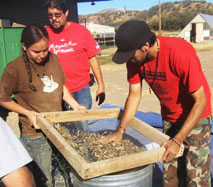Source: TruthDig.com
I gave a talk last week at Canada’s Wilfrid Laurier University to the Congress of the Humanities and Social Sciences. Many in the audience had pinned small red squares of felt to their clothing. The carre rouge, or red square, has become the Canadian symbol of revolt. It comes from the French phrase carrement dans le rouge, or “squarely in the red,” referring to those crushed by debt.
The streets of Montreal are clogged nightly with as many as 100,000 protesters banging pots and pans and demanding that the old systems of power be replaced. The mass student strike in Quebec, the longest and largest student protest in Canadian history, began over the announcement of tuition hikes and has metamorphosed into what must swiftly build in the United States—a broad popular uprising. The debt obligation of Canadian university students, even with Quebec’s proposed 82 percent tuition hike over several years, is dwarfed by the huge university fees and the $1 trillion of debt faced by U.S. college students. The Canadian students have gathered widespread support because they linked their tuition protests to Quebec’s call for higher fees for health care, the firing of public sector employees, the closure of factories, the corporate exploitation of natural resources, new restrictions on union organizing, and an announced increase in the retirement age. Crowds in Montreal, now counting 110 days of protests, chant “On ne lâche pas”—“We’re not backing down.” read more


